Best Deck-Building Games to Play If You Love Balatro
From quick superhero battles to longform narrative campaigns, there’s a deckbuilding game for everyone

Balatro has taken the gaming world by storm. Its pared-back, poker-based approach to deck-building has introduced many new players to the genre (and reintroduced some old fans who fell away).
I’m in the latter camp. I hadn’t played a deck-builder in years until Balatro rekindled my love of building strategic decks and playing cards that synergize with one another. There is something truly special about the feeling of creating a hand of cards that play off one another, to see the potential of those cards multiplying as they play off one another.
Balatro introduces itself slowly and surely by trading off players’ knowledge of poker. The better the hand you play, the more points you get. It’s a simple introduction point, and by the time Balatro starts introducing traditional aspects of deck-building like powering up cards and modifiers that increase the multiplier applied to your score, it’s too late. You’re already too deep in.
Since then I’ve been revisiting some old favourite deckbuilders, as well as trying those released in the last few years. The sheer variety of approaches to the genre means you’re likely to find one that matches your desires and sensibilities, but they all scratch the itch that comes with chasing the perfect hand to play at just the right moment.
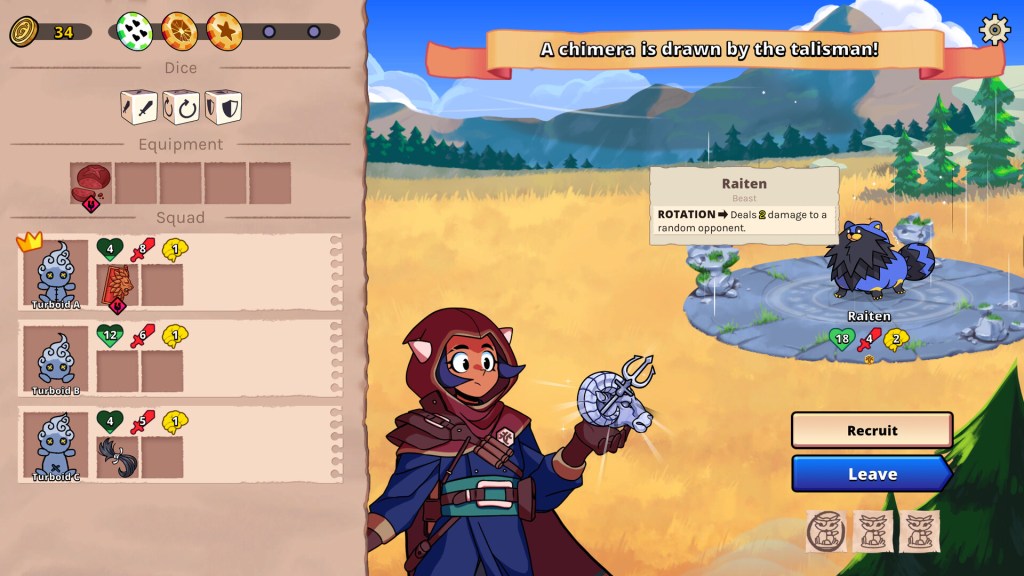
Dicefolk
Well, this is technically a dice-builder, but the central tenets of the genre are all there. Though it clearly takes some of its visual inspiration from monster-taming games like Pokemon, Dicefolk – which was just released in February – takes a slightly more tactical approach to building up the strength of your deck of monsters.
Each ‘run’ is an exploration of three sequential worlds, which gradually reveal themselves as you progress. Along the way you can recruit new monsters to your hand, apply modifiers to them or your dice, and occasionally find the odd merchant or bonfire around which you can lick your wounds. What makes the gameplay loop so compelling is that each decision is often a trade-off. You can recruit a new monster, but it means bidding farewell to one of your existing ones. You could take on an elite battle, but you won’t know if the reward is worth it until afterward.
Meanwhile, the actual battles are exercises in mapping the synergies between your dice and your monsters. You could play a dice that swaps one monster in as the leader, triggering an opportunity attack from another in the back line. However, that will open up the new leader for an attack. And since you also have to play the opponent’s team as well, Dicefolk is a fascinating study in maximizing the effectiveness of your own deck while minimizing the impact of the opponent.
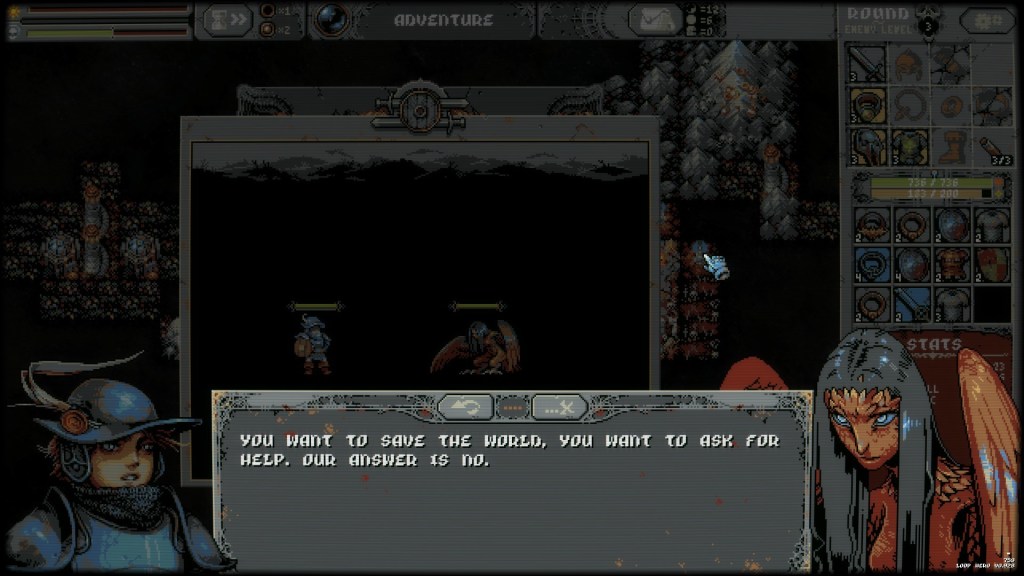
Loop Hero
This wonderfully idiosyncratic title hides its deckbuilding aspects behind a more obvious gameplay system. Your character – an amnesiac hero cast adrift in a void that changes as you perform loop after loop – does everything from move to battle automatically. All you can do as the player is gather loot from fallen enemies to improve your character’s equipment as they progress.
Or at least that’s how it appears at first glance. As you progress enemies will drop cards that you can use to transform the world of the loop. You could, for example, use a vampiric mansion card to create that location on a tile on the map, which spawns new enemies every few in-game days. What becomes apparent as you play is that these tiles synergize with each other and that synergy empowers your character in various ways.
Every rock card, for instance, gains a bonus if laid next to a mountain range. Since mountain tiles grant your hero extra hitpoints, you’ll want to tactically lay them near one another for the best possible effect. It’s a beautiful way to incorporate deckbuilding into a roguelike experience. But please, for the love of god, set the exploration and battle speed to “High” when you play.
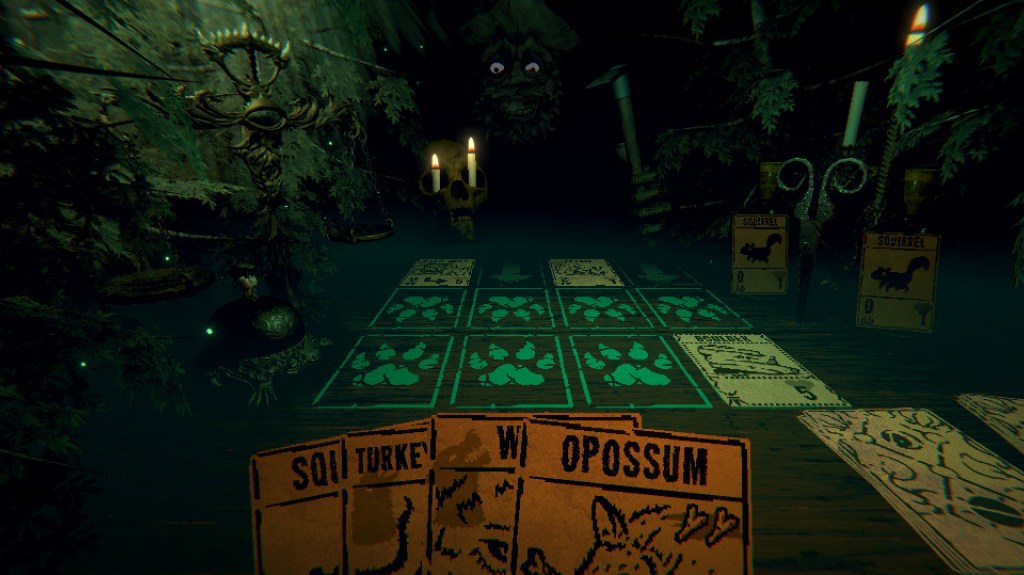
Inscryption
Inscryption defies definition. Its main gameplay loop is based around a form of deck-building that sees you create hands using creature-based cards to tear through your opponent and attack them directly. With the odds categorically stacked against you (and an opponent that can full-on cheat), Inscryption is potentially the hardest deck-builder on this list.
There’s so much else going on just below the surface, though. A frankly insane narrative throws you for a loop whenever it can, and puzzle mechanics that actively require your character to walk away from the table in-game and explore are regularly utilized. Given that this was developed by the team behind the cult hit Pony Island, it shouldn’t come as a surprise that Inscryption is convoluted and, at times, outright bizarre.
But when the core gameplay is this good, it doesn’t matter. It never feels less than exhilarating to evolve and combine your cards to maximize their benefits or play them in the perfect position to counter whichever creatures and modifiers are imposed by the current location. And because the odds are so stacked against you, finally defeating the antagonist Leshy provides a rush of endorphins unlike anything you’ll have felt. Well, at least it does until the rest of the game reveals itself.

Marvel Snap
This free-to-play 1 v 1 deckbuilder is a joyous exploration of the interplay between cards’ powers. While it’s technically a CCG (Collectible Card Game) in many respects, if you’ve enjoyed building the synergies between Jokers and face cards in Balatro you’ll love the strands of deck-building in Snap.
As you may expect, your Marvel Snap hand is made up of representations of iconic Marvel characters, all of whom offer an ability or option that feels relevant to the depicted character. Captain America, for instance, will use his inspirational leadership to power up the other cards in the area in which he’s played. Squirrel Girl (the de facto most powerful character in the Marvel universe) will flood the other zones with, well, rodents upon her reveal.
The interplay between those cards is what makes the gameplay shine. A well-played White Tiger, for instance, might not be powerful in its own right, but it spawns a strong spirit beast card into another zone, which can complete Ant-Man’s requirement to have four cards in an area to boost all their power. Combine that with the modifiers of the three zones in which you play your cards, such as the Asgard adding two cards to the deck of whoever currently has the higher power there, and you start to appreciate the subtleties of this deceptively complex system.
The presentation of Snap is also immaculate. From the hilariously high-quality intro movie to the way your cards level up (breaking their frames and eventually becoming 3D), it all feels phenomenal. As a free-to-play title, the monetization aspects do eventually become extremely apparent, particularly around refreshing daily missions, but there’s a lot here to explore before that happens, and the battles are never less than thrilling. And if this doesn’t scratch your superhero itch, Marvel’s Midnight Sons is another superhero-based deck-builder that got criminally overlooked upon its first release.
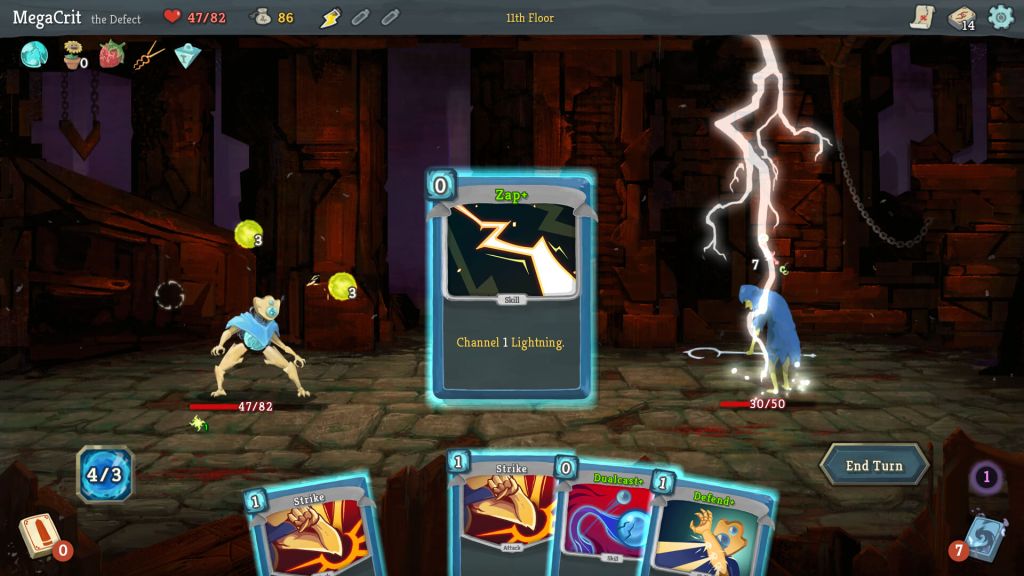
Slay the Spire
It would be criminal to have an article about deck-builders and not include Slay the Spire on it. Widely considered one of the best deckbuilding games, this is strategic gameplay at its joyous best.
Your character, (chosen from one of four fantasy archetypes, each with their own relative benefits and weaknesses) has to ascend through various layers of the titular spire. Each level has its own set of enemies and bosses, requiring you to reconsider your strategy relentlessly. With its side-on view of the battle it evokes some of the all-time great RPGs, but where those games have you upgrade your character directly, Slay the Spire instead focuses on upgrading the cards that dictate the actions you can take in battle.
The benefits of building a deck with cards that complement every other card’s abilities become apparent faster than almost any other game on this list. By the time you face the first boss, you will already have built a strategy around having one card buff another, or around adding extra damage based on the number of attack cards you have in your hand. Of all the games on this list, this is the game to jump into if you want a crash course on what deckbuilding is all about.
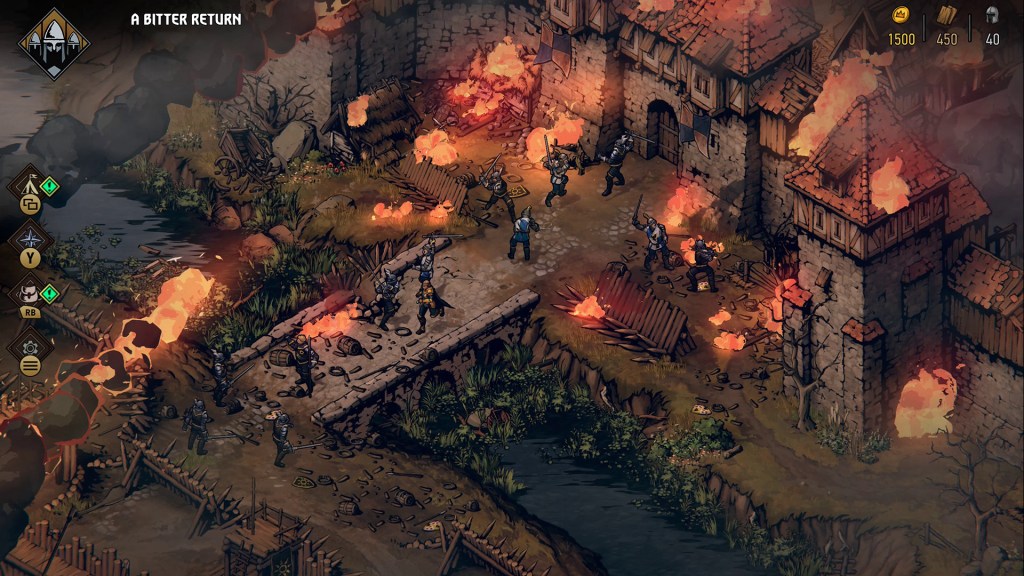
Thronebreaker: The Witcher Tales
Many deckbuilding games include some kind of framing narrative that helps contextualize why the battles are taking place. Thronebreaker makes that narrative the core part of its appeal, as you might expect from a game that takes place in The Witcher universe.
It is the tale of that canon’s Queen Meve, who must defend her realm through diplomacy and battle. What makes the game fascinating is how that narrative plays into the deckbuilding gameplay. The cards you play represent her army, and as the narrative shifts the deck will be altered in a variety of ways.
Thronebreaker builds upon the gameplay mechanics of the in-universe card game Gwent, which was itself a time suck for players of Witcher 3. By marrying that to a compelling narrative, a world that rewards exploration and light resource management, Thronebreaker manages to be a compelling experience unlike anything else out there. If Balatro’s barebones appeal left you hungry for something that provides context for your deckbuilding battles, this is the game for you.
